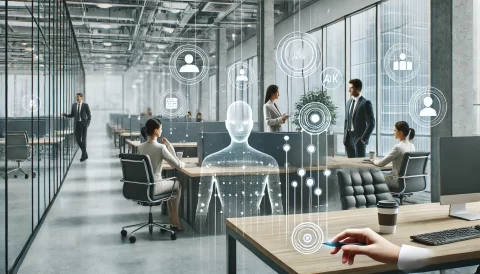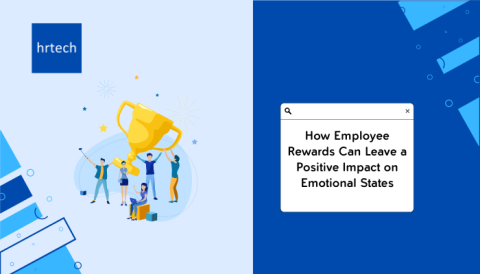In a hybrid work model, a positive employee experience is crucial. It involves creating an environment that caters to diverse work preferences and styles, fostering a sense of belonging and inclusion, and empowering employees with the right tools and resources to perform their tasks effectively.
by Abhishek Shah, Founder and CEO, Testlify

In today’s ever-evolving business environment, the concept of the workplace has dramatically transformed. The COVID-19 pandemic has made ‘hybrid work’ – a blend of remote and on-site work – a new normal. This shift has brought about a unique set of challenges and opportunities, making it essential for businesses to focus on creating a great employee experience in the hybrid workplace.
This blog provides a guide on how to design and deliver an excellent hybrid workplace experience.
Understanding the hybrid workplace
A hybrid workplace is a flexible work environment that allows employees to work from various locations, not just the traditional office space. This includes working from home, co-working spaces, and even coffee shops.
Why it matters
In a hybrid workplace, cultivating a positive employee experience is crucial. It’s not just about employee satisfaction, but also about fostering engagement, productivity, and a sense of belonging. When employees have a positive experience, they’re more likely to remain committed to the organization and perform their best.
Key strategies for designing a great employee experience
Creating a cohesive culture
In a hybrid environment, maintaining a cohesive and inclusive culture is a challenge. To ensure every employee, regardless of location, feels connected, it’s essential to build a culture that transcends physical boundaries. Regular virtual team-building activities, open communication channels, and consistent recognition can help nurture this sense of unity and belonging.
Investing in the right technology
Effective collaboration in a hybrid workplace depends on the right technology. Invest in reliable video conferencing tools, collaborative software, and secure cloud services. Remember, technology should facilitate work, not become a hurdle.
Flexible work policies
In a hybrid workplace, one-size-fits-all policies may not work. Design flexible work policies considering employees’ diverse needs. This flexibility can include customizable work hours, days for in-office collaboration, and opportunities for remote work.
Supporting employee well-being
Hybrid work can blur the lines between work and personal life. Therefore, it’s vital to support employee well-being by encouraging work-life balance, offering mental health resources, and providing wellness benefits.
Delivering a great employee experience in a hybrid workplace
Communicate and collaborate
Strong communication is the backbone of a successful hybrid workplace. Encourage open dialogue, provide regular updates, and foster a culture of collaboration. Utilize communication platforms that allow seamless interaction, regardless of location.
Recognize and reward
In a hybrid environment, it’s easy for employees’ hard work to go unnoticed. Regular recognition and rewards can boost morale and motivation. Implement a system to acknowledge and appreciate employees’ efforts, both publicly and privately.
Continuous learning and development
Offer opportunities for continuous learning and development. This could be through online courses, webinars, or virtual workshops. Providing growth opportunities can enhance job satisfaction and retention.
Regular feedback
Continuous feedback is key to improving the hybrid work experience. Encourage feedback from employees about their experiences, challenges, and suggestions. This information can help refine your strategies and create a more positive work environment.
The role of employee experience in a hybrid work model
Employee experience is the sum total of interactions, perceptions, and feelings that an employee has at various touchpoints within an organization. It significantly impacts engagement, productivity, retention, and overall company culture.
In a hybrid work model, a positive employee experience is crucial. It involves creating an environment that caters to diverse work preferences and styles, fostering a sense of belonging and inclusion, and empowering employees with the right tools and resources to perform their tasks effectively.
Building a cohesive and inclusive culture in a hybrid workplace
A cohesive and inclusive culture in a hybrid workplace is one where all employees, irrespective of their physical location, feel valued, respected, and part of the team. It involves promoting diversity and inclusion, facilitating regular virtual team-building activities, and encouraging open communication.
This can help foster a sense of unity and engagement, making employees feel like they are a part of a greater whole, thereby increasing overall productivity and job satisfaction.
Investing in technology
Technology is the backbone of a hybrid work environment. It facilitates communication, collaboration, and work management. This includes investing in reliable video conferencing tools, project management software, collaborative platforms, and secure cloud services. The right technology not only enables seamless work but also fosters a sense of connection and engagement among remote teams.
Crafting flexible work policies for the hybrid workforce
In a hybrid workplace, rigid, one-size-fits-all policies don’t work. Instead, flexible work policies that cater to individual needs while maintaining business productivity are required. This could mean flexible work hours, allowing employees to choose their work location, or offering autonomy in how work is done. These policies can enhance employee satisfaction, increase retention, and even boost productivity.
Prioritizing employee well-being in the hybrid workplace
The hybrid work model can blur the lines between personal and professional life, leading to increased stress and burnout. Thus, prioritizing employee well-being is essential. This could involve promoting work-life balance, offering mental health support, providing wellness benefits, and creating a supportive work environment. By caring for employees’ well-being, companies can improve engagement, productivity, and retention.
Fostering effective communication and collaboration
Effective communication and collaboration are key to the success of a hybrid work environment. They prevent misunderstandings, promote teamwork, and ensure everyone is aligned towards common goals. This involves regular check-ins, clear and concise communication, and the use of collaborative tools. Encouraging open dialogue and feedback can also foster a culture of transparency and trust.
The power of recognition and reward in the hybrid workplace
Recognizing and rewarding employees for their efforts is a powerful way to boost morale, motivation, and productivity in a hybrid workplace. It shows employees that their work is valued and appreciated, leading to increased job satisfaction and loyalty. This can be done through public acknowledgments, bonuses, promotions, or even a simple thank you note.
Nurturing continuous learning and development opportunities
Providing opportunities for continuous learning and development is essential in a hybrid work environment. It enables employees to upskill and reskill, keeping up with the changing business landscape. This could involve offering online courses, webinars, workshops, or mentoring programs. By investing in employees’ growth, companies can improve job satisfaction, increase retention, and drive business success.
The importance of regular feedback in a hybrid work setting
Regular feedback is crucial in a hybrid work setting. It helps identify areas of improvement, align expectations, and foster a culture of continuous learning. Feedback should be a two-way street – managers should provide feedback to employees, and likewise, employees should be encouraged to voice their thoughts, concerns, and suggestions. This can help companies refine their strategies, and improve the employee experience
Conclusion
The hybrid workplace model is here to stay, and organizations must adapt to this reality. With a focus on a cohesive culture, the right technology, flexible work policies, and employee well-being, businesses can design and deliver a great employee experience. Open communication, recognition, continuous learning, and regular feedback are the pillars of a successful hybrid workplace.
Remember, in the world of hybrid work, the employee experience is no longer confined to office walls. It extends to every corner of the globe where your employees are. Embrace the change, and you’ll be well-equipped to thrive in the future of work.

About the Author:
Abhishek Shah, Founder of Testlify is a headstrong person. If he decides to do something then, he surely gets it done by all the fair means. Doing fair business is his passion and he treats all his team members like his own family. With a very kind and gentle heart and always walking around with a smile on his face, you will often find him interacting and helping out his colleagues. Talking about his family, he is married to Kinjal Shah who is homemaker & mother of a lovely kid named “Raj”. Apart from his interest in Web development, he is an ardent reader of books like, How to win friends and Influence people by Dale Carnegie. It is books like these that make up for his perfect leadership qualities. You will often find him engaged in watching TEDex videos in his free time or roaming around with a big fat book on leadership and management. He adores people like Mark Zuckerberg and Steve Jobs and aspires to become as successful as them.





